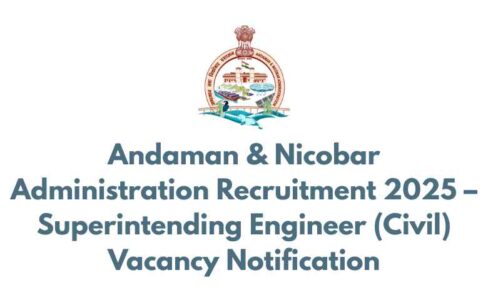Last Updated on March 5, 2025 by Admin
Procurement is more than just a process—it’s the strategic backbone of any business that aims to secure quality goods, services, or works efficiently and cost-effectively. As global markets evolve, so do procurement trends. In 2025, companies are leveraging advanced analytics, digital transformation, and sustainable practices to optimize procurement. This comprehensive guide explains the different types of procurement and highlights the top procurement methods that organizations use today.
Table of Contents
Understanding Procurement in the Modern Era
Procurement involves sourcing goods, services, or works from external suppliers through competitive bidding, tenders, or direct negotiations. In today’s economy, where supply chains are increasingly complex and market dynamics change rapidly, procurement teams play a crucial role in maintaining cost efficiency and operational excellence.
Key Responsibilities of Procurement Departments
- Strategic Sourcing: Identifying the best suppliers based on quality, cost, and sustainability.
- Contract Management: Handling legal procedures and negotiations.
- Cost Management: Budgeting and forecasting expenditures based on up-to-date market trends.
- Supplier Relationship Management: Building long-term partnerships that drive innovation and efficiency.
Recent surveys in 2025 indicate that over 68% of companies have upgraded their procurement strategies to include data-driven decision making and digital procurement platforms, leading to a 15% overall cost reduction in sourcing activities.
Roles in Procurement: Who Drives the Process?
Successful procurement operations rely on dedicated professionals who manage every step of the process. These roles include:
- Procurement Officer
- Procurement Manager
- Procurement Executive
- Procurement Specialist
- Procurement Head
- Procurement Consultant
- Procurement Director
Each role contributes to ensuring that the procurement process is transparent, competitive, and aligned with corporate strategy.
Types of Procurement
Procurement can be categorized in several ways. It can be classified as direct or indirect procurement, depending on how the company will use the items being procured. It can also be categorized as goods or services procurement depending on the things that are being procured.
- Direct procurement refers to obtaining anything that’s required to produce an end-product. For a manufacturing company, this includes raw materials and components. For a retailer, it consists of any items purchased from a wholesaler for resale to customers.
- Indirect procurement typically involves purchases of items that are essential for day-to-day operations but don’t directly contribute to the company’s bottom line. This can include office supplies and furniture to advertising campaigns, consulting services, and equipment maintenance.
- Goods procurement broadly refers to the procurement of physical items, but it can also include things like software subscriptions. Practical goods procurement generally relies on good supply chain management practices. It may consist of both direct and indirect procurement.
- Services procurement focuses on procuring people-based services. This may include hiring individual contractors, contingent labor, law firms, or on-site security services, depending on the company. It may consist of both direct and indirect procurement.
Milestone-Based Payments & Instant Retention Release: 2025 Playbook
Andaman & Nicobar Administration Recruitment 2025 – Superintending Engineer (Civil) Vacancy Notification
Walk-in Interviews from 01st July to 31st July 2025 | Various Construction Engineering Jobs
Government Engineering Jobs | Application Deadlines [July 2025 Updated]
HVF Recruitment 2025 for Junior Technician | 1850 Posts | 18-07-2025
Net-Zero Construction Roadmap 2026 – Standards, Tools & Practical Steps
Innovative Solutions for Safe Heavy Equipment Transport
RITES Ltd Recruitment for Engineering Professionals | 18 Posts | 27-07-2025
MECON Recruitment 2025 for Managers | 13 Posts | 03-08-2025
Resume Customizer: The Free AI Tool Every Student, Fresher, and Professional Needs in 2025
Introducing the AI Construction Career Mentor: Your Personal Career Coach
Stylish and Affordable Flooring Trends that will Define Interiors in 2025
Procurement Methods
Generally speaking, there are six procurement methods used by the procurement team in a company. The actual names could vary depending on your company and industry, but the process remains the same. The six procurement times are open tendering, restricted tendering, request for proposal, two-stage bidding, quotations, and single-source procurement.
#1. Open Tendering
Open tendering is shorthand for competitive bidding. It allows companies to bid on goods in open competition or open solicitation manner. It is also known as Invitation for Bids or Invitation to Bid (ITB). Available tendering requirements call for the company to:
- Advertise locally
- Have unbiased and coherent technical specifications
- Have objective evaluation measures
- Be open to all qualified bidders
- Be granted to the least-cost provider sans contract negotiations.
Arguably, the open tendering method of procurement encourages effective competition to obtain goods, emphasizing the value of money. However, considering this is a procedure-based method, many procurement experts feel that this method is unsuitable for large or complex acquisitions due to the intense focus on the output process instead of strict obedience to standards.
#2. Restricted Tendering
Unlike open tendering, restricted tendering only limits the number of requests for tenders that can be sent by a supplier or service provider. Because of this selective process, restricted tendering is also sometimes referred to as selective bidding.
Like open tendering, determined tendering is considered a competitive procurement method; however, the competition is limited to agencies invited by the procuring team. The procuring entity should establish guidelines to use when selecting the suppliers and service providers on the invitation list.
Randomized selections will not bode well for procuring. This method is selective to find the best-suited and most qualified agencies to procure goods and services from. It’s also employed as a way for the procuring team to save time and money during the selection process.
#3. Request for Proposals (RFP)
Request for Proposal is a term that is used all across the business world. Social media managers receive RFP’s from potential clients all the time when a client is seeking a new manager of their venture. This proposal is a compelling and unique document stating why the business is the best fit for the project.
Similarly, in the procurement world, an RFP is a method used when suppliers or service providers are proposing their goods or service to a procurement team for review. If you’re a supplier, understanding the ins and outs of quality service management is key to winning your bid. Read more about this in service quality management.
Procurement teams often hunt for the best valued, most marketable items to bring into circulation. A client may feel they have all of the qualifications to fit the needs of fulfilling a specific requirement of a procurement team – but they have to prove it.
The agencies writing the RFP’s should submit a two-envelope proposal to the procurement manager. The two-envelope process allows the procurers’ to review the submission through and through without knowing the financial component. The financial bid is sealed in the second envelope and should only be opened after the content of the first envelope proposal is approved or rejected.
This eliminates any persuasion by cost and allows an objective lens to look through when analyzing a good fit. The proposal with the best fit qualifications and best price will be selected. No contract should be negotiated if a lesser qualified (yet still eligible) selection has a lesser price. The most suitable and appropriate proposal, regardless of price, should be selected.
#4. Two-Stage Tendering
Two procedures are used under the two-stage tendering method. Each one of the procedures has a two-stage process. This can be disadvantageous for some procurement teams if there is a time limit on securing a contract. In the same vein, this option is more flexible for both parties, allowing more room for discussion to meet mutual needs.
The first procedure is very similar to the RFP method, as discussed above. The procurement team receives a proposal with two envelopes – one with the proposal itself and the associated financial information. The difference is that the bidder must submit a technical proposal highlighting their solutions to fulfill the requirements specified by the procuring department.
This proposal is scored according to the relevance of the solution to the needs of the procurer. The highest scored proposal is invited for further discussion in an attempt to reach an agreement. After the final agreement for the technical proposal is reached, the bidder is invited to submit their financial proposal, and then further discussions ensue to negotiate a contract.
The second procedure is much like the above; however, a partial proposal is submitted instead of the bidder submitting a fully completed technical proposal. The methodology and technical specifications will be included but not to the fullest extent. This allows room for even more customization and discussion.
Once the highest qualified bidder is selected, they will be invited to submit a thorough technical proposal along with a financial proposal. The technical proposal will be evaluated, and only then will the financial proposal be opened. The combined score of the technical and financial proposals is the grounds on which a bidder is contracted.
#5. Request for Quotations (RFQ)
This procurement method is used for small-valued goods or services. Request for quotation is by far the least complex procurement method available. If you have the option, use this method to ensure a fast procurement process and not paperwork. There is no formal proposal drafted from either party in this method. Essentially, the procurement entity selects a minimum of three suppliers or service providers that they wish to get quotes from. A comparison of quotes is analyzed, and the best selection determined by requirement compliance is chosen.
#6. Single-Source
Single source procurement is a non-competitive method that should only be used under specific circumstances. Single source procurement occurs when the procuring entity intends to acquire goods or services from a sole provider. This method should undergo a strict approval process from management before being used. The circumstances which call for this method are:
- Emergencies
- If only one supplier is available and qualified to fulfill the requirements
- If the advantages of using a specific supplier are abundantly clear
- If the procurer requires a particular product or service that is only available from one supplier
- For the continuation of work that cannot be reproduced by another supplier
In the end, the type of procurement method you choose to use is highly relative to the conditions of the procurement effort and the kind of good or service being acquired. All procurement methods follow tight legal frameworks to ensure all standards are being met and quality in the selection process exists.
Choosing the Right Procurement Method
The optimal procurement method depends on factors such as the nature of the goods or services, market conditions, and project complexity. Regardless of the chosen method, all procurement processes must adhere to strict legal and quality standards to ensure fairness and efficiency.
Related Posts:














